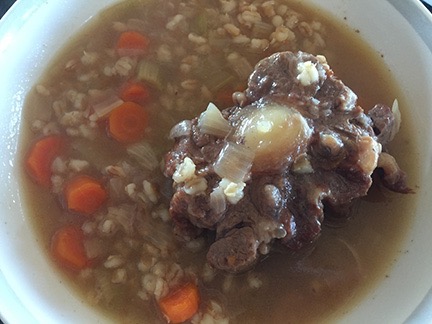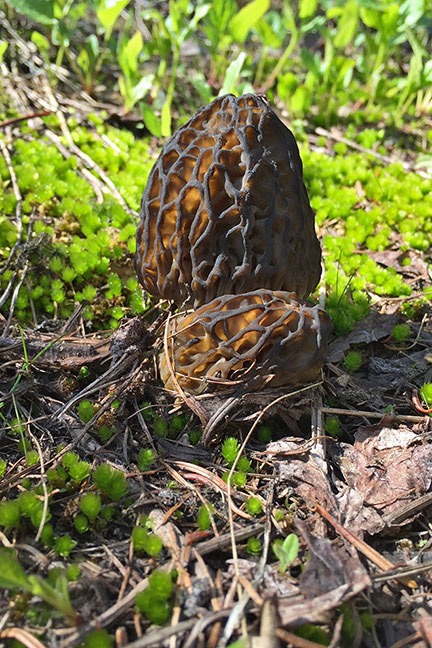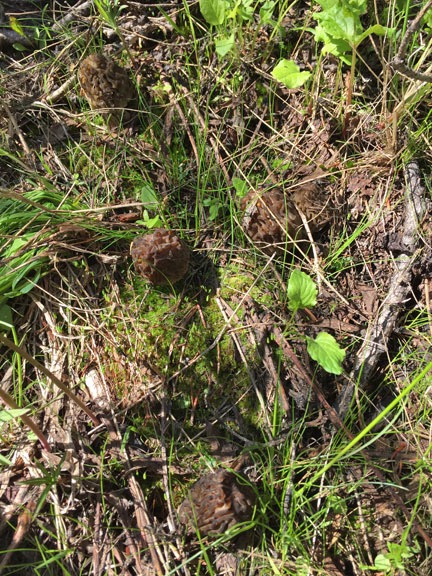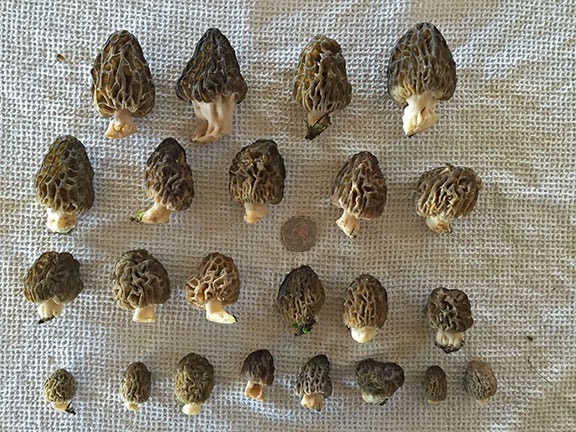A twist on a family recipe…kind of.
My grandfather was German — born in Germany — and trained as a pastry chef. He owned a bakery in New Jersey and ran it with my grandmother until I was about 10 years old, when they retired to a life of leisure in their New Jersey home.
He was also an excellent cook who whipped up the real German dishes I grew up with. One of them was pork with sauerkraut. Years after my grandparents were gone, I got the recipe and whipped up a batch at home, which, if I recall, called for boneless country-style pork ribs. I’ve since lost the recipe and pretty much forgot all about it.
Until my friend Shirley shared a similar recipe on Facebook. That got me thinking about it. She linked to another recipe even more similar to the one I remembered. I decided to make it. I bought the pork. And then I got busy with other things (as usual) and forgot about making it (as usual). Fortunately, I’d put the pork in the freezer and when I was poking around in there thinking about what to make this weekend, I found it and remembered the recipe.
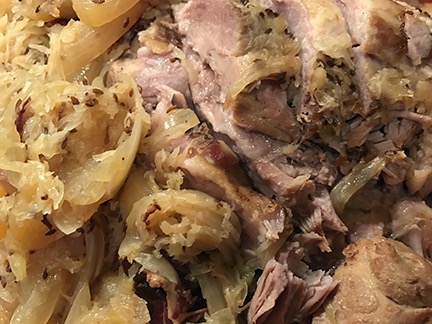
Here’s a closeup of my version of the finished dish. (Do you really need to see more than one picture?)
Of course, by then I’d lost Shirley’s recipes. Rather than trying to find it on Facebook, I did a Google search, came up with a few recipes that were similar, and zoomed in on one of them. But since that wasn’t really what I wanted to make — I don’t remember potatoes being in the dish — I fine-tuned it to make it into something similar but different.
Following me after all that?
Anyway, here’s my version, which includes instructions specific to an Instant Pot. One of the things that sold me on Instant Pot was that it was a slow cooker, too; no need for multiple devices filling my pantry shelves.
Ingredients:
- 1 2 to 4 pound boneless pork loin roast. This is not the same as a pork tenderloin. (I’ve said it before and I’ll say it again: do not waste a pork tenderloin in a slow-cooked or pressure-cooked recipe. It is naturally tender and is best grilled.) If there’s any visible fat on the roast, trim it off.
- Salt and pepper to taste.
- 2 strips uncooked bacon, chopped. I used buckboard bacon, since that’s what I had.
- 1 tablespoon brown sugar. I bet you could substitute maple syrup or even honey.
- 1 14 oz. can sauerkraut. Or whatever “standard” sized can or jar you find. You don’t want the big jar. Don’t drain it!
- 1 large onion, cut into 1/4 inch wedges. That’s the way I cut them, anyway. I used regular yellow onions, but I suppose you can use any kind of onion you want.
- 1 large apple, cut into 1/4-1/2 inch wedges. I used a Honeycrisp, because that’s all I had in the house. Silly me. I kept one segment for the cook. Quality control, you know.
- 2 teaspoons caraway seeds. That’s the one part of the recipe that I definitely do remember, mostly because when I was a kid I hated caraway seeds and my baker grandfather would make me rye bread without it. (Talk about a spoiled kid.)
You know, if you’re really big on starches with your food, you could add potatoes. The original recipe called for 6 white ones, peeled and quartered.
Instructions:
- Season the pork with salt and pepper and set aside.
- Press Sauté on the Instant Pot and toss in the bacon. Cook it up to release its yummy aroma and fat. (Okay, so if you don’t have an instant pot, you’ll need to do this in a pot on stove.)
- Note about browning the meat:
The recipe I based this (loosely) on instructed cooks to simply put the raw pork into the pot with the other ingredients and cook it. But my understanding is that browning meats helps increase flavor so that’s why I did it here — and nearly always do it in any slow cooker or pressure cooker recipe. I added the bacon merely as a source of tasty fat; you could, I suppose skip the bacon and use some sort of oil instead.Add the pork and brown on all sides. This could take a while. Be patient. Try to stir around the bacon so it doesn’t get all burned.
- Remove the pork and set it aside again.
- Deglaze the pan with about 2 cups of hot water. This means adding the hot water and using a wooden or silicone spoon to rub away the burned bits at the bottom of the pan. Along the way, the water will turn into bacon soup. (At this point, if you’re not using an Instant Pot, you might want to transfer everything in the pot to your slow cooker which you should then turn on high. And remember later, when you’re washing two pots, that Instant Pot users only washed one. Just saying.)
- Add the brown sugar and stir it in.
- Return the pork to the pan.
- If you’re including potatoes, I recommend putting them in the slow cooker around the pork right now.
- Add the sauerkraut (with all juices), onions, and apple. Just dump them in right on top of the roast.
- Sprinkle the caraway seeds on top.
- Cover and bring the mixture to a boil, then press Off. Then press Slow Cooker and adjust the temperature to Low and the Time to 6 hours. (If you’re using a regular slow cooker, you’ll probably need to cover it to get it up to temperature. Once it’s bubbling, turn the temperature down to low.)
- Slow cook 6 hours.
- Remove the meat from the pot, slice it as thin as you can (against the grain; good luck), and arrange it on a serving plate. Using a slotted spoon, scoop out the rest of the goodies and arrange them around the pork. You can put some of the juices in a milk pitcher or gravy boat for guests who might want to pour it over on their plates.
- Serve hot (duh), possibly with some crusty bread. Or rye bread, with or without seeds.
If you try this, please do let me know what you think.
—
—

